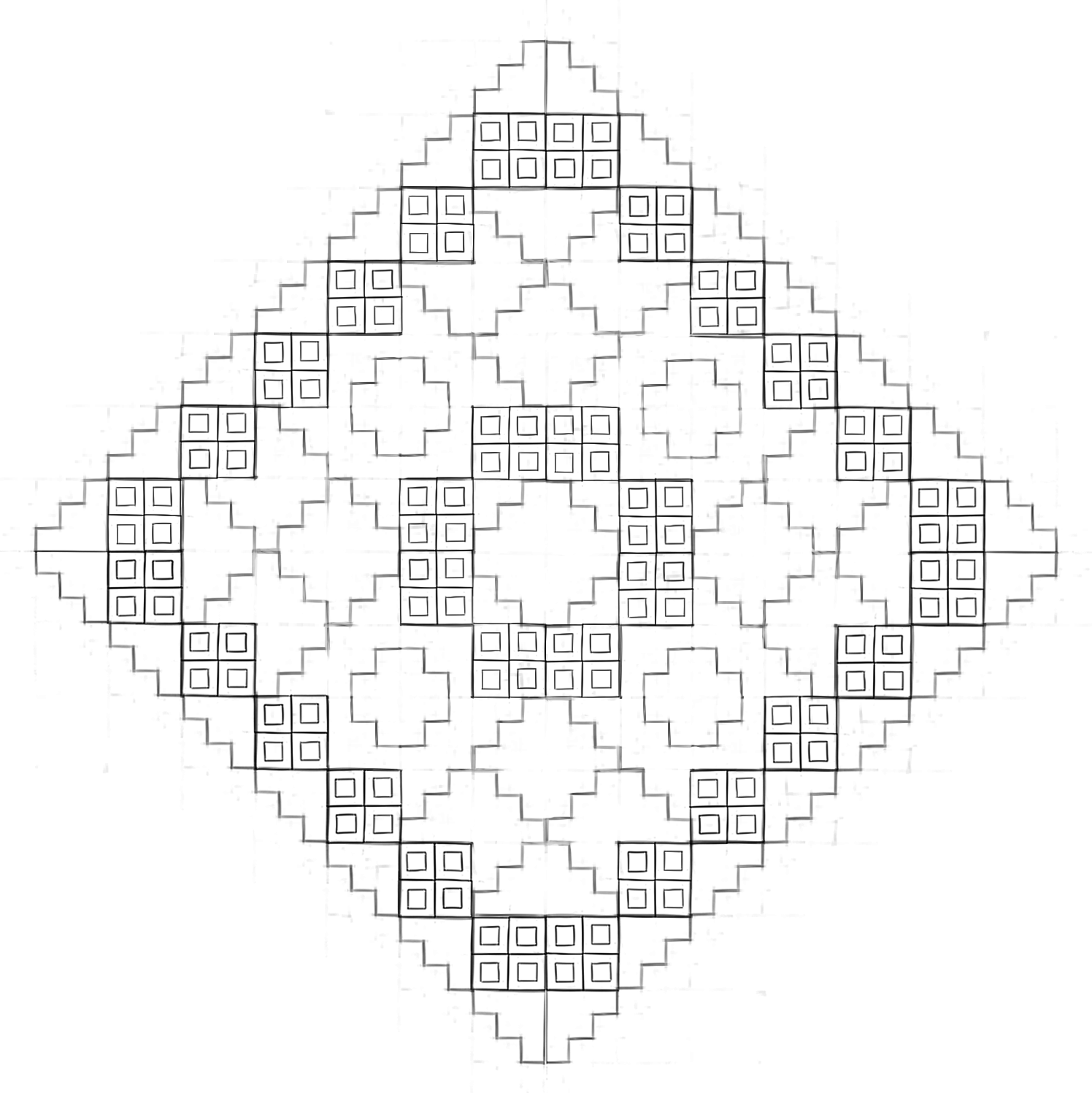So I’ve been playing around with creating my own tocapu, or pattern based on Andean sacred geometry. I’ve been inspired by the Andean Futurist Manifesto, and also this idea of fractality, shapes and ideas repeating, reflecting, and refracting on themselves, ad infinitum.
Something I learned from Zadir Milla Euribe, an educator from Peru from who I first began learning about Andean design and cosmovision, is how to begin reading the patterns of the earth and sky.
![A]()
Tocapus like this one, designed with inspiration from Andean sacred geometry, are intrinsically connected with Andean cosmovision and dialogue with the planet
In the way one can see patterns repeated in nature, from the similarity of the branches of a tree to the bronchi of the lungs, to the spirals in a seashell and the spiral arms of a galaxy, in the tocapus one can see the patterns in small segments repeated in the larger segments.
This is because life itself is dynamic, a spiral — and you can see this play out even in history. Everything is always changing yet circling back on itself, evolving with similarities but transformed — what has happened will come again, and everything is similar yet nothing is the same.
When you walk up to the peak of a mountain, or stand beside a lake, if you look closely and choose to see it, you may see the patterns of clouds represented also in the treeline, and repeated again in the shape of a stone on the ground, and repeated against the horizon — everything always speaking, always dialoguing — this is how the world, how the universe speaks.
The ancestors of the Andes understood this, which is why their architecture takes on natural forms that, in the same way they saw the world speaking to them, attempts to speak with the world. That’s the reason the Nazca lines take on the massive shapes of animals. That’s the reason tocapus have that same characteristic of circling, repeating, the whole contained within the parts.
I’ve come to understand that perhaps this is beyond reason, and when you look at the clouds and see the shapes of animals and objects, perhaps it is all in our imaginations, or perhaps it is also the world thinking, dreaming, and imagining, and trying to speak to us.
In the practice of working with the tocapus, it’s another way of seeing, that’s for sure. It’s not a vision that sees the natural world as a resource to be analyzed, broken down, exploited. And yet maybe it’s this very way of seeing that will allow us to imagine another reality, to speak and create — in contrast to what we know — in reciprocity with the earth.

